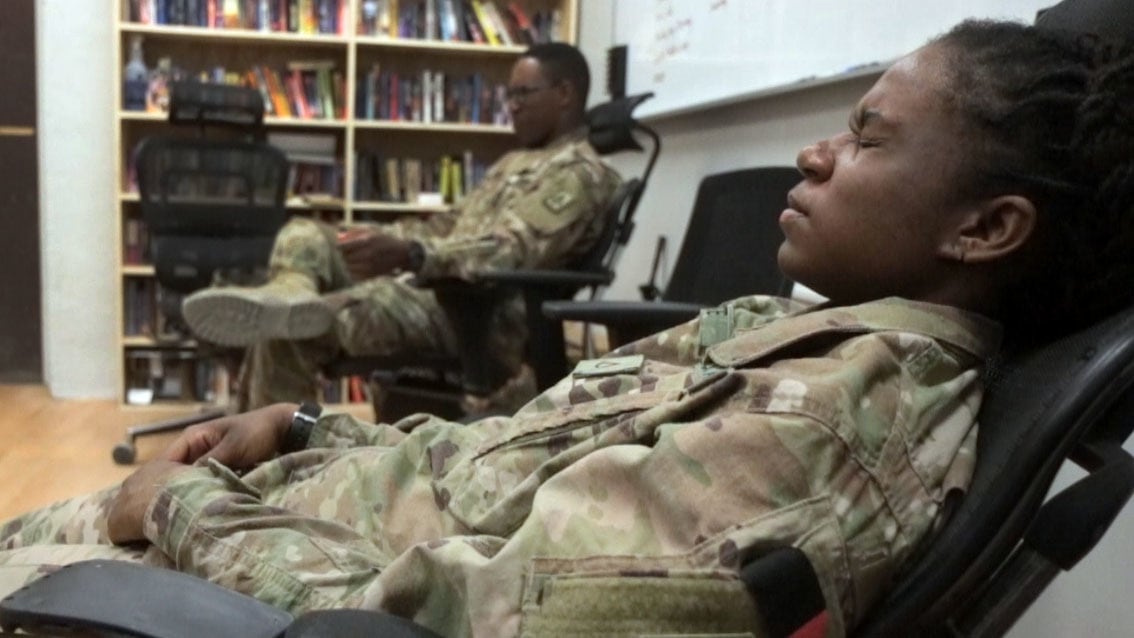The Journal of the American Medical Association published a report that confirmed what we have known for some time: so-called “evidence-based treatments” are not working for the vast majority of service members and veterans struggling with PTSD.
Put simply, the mental health community is a disaster. Their priorities are driven by insurance and pharmaceutical companies rather than what is best for the patient. The result? A suicide epidemic that is going from bad to worse, and hundreds of thousands of veterans unwilling to seek out any kind of treatment. Despite the failure of such treatments, however, we are told that we should be satisfied with a 30 percent solution, with comparisons being made in a recent article to cancer treatments.
RELATED

I spent 21 years in the U.S. Navy as a bomb disposal specialist, widely considered the world’s most dangerous profession. My job involved diving, parachuting, disarming bombs, and supporting missions for special operations forces. In the Navy, we take our life support equipment very seriously, as does DoD and Congress when they approve the budget and acquisition of such.
Since 2004, I have been working to take care of wounded military personnel and their family members. We have raised over $100 million and distributed the same amount through services, specifically those concerning the wellness of veterans.
For those of you who don’t know the statistics, approximately 125 Americans a day take their own lives. About 20 of these are veterans. The truth about these numbers is that we really don’t know what the actual figures are for a variety of reasons, including the fact that many coroners don’t report suicide as a cause of death.
In the article I referenced above, the author seems very satisfied, as does Congress and various associations of psychologists, psychiatrists, and social workers, with a 30 percent solution that defines success by mild reductions in symptoms, rather than focusing on quality of life improvement, personal growth, or remission.
I have written several papers over the last few years on why I believe that our veterans’ mental health crisis is a leadership issue and not a mental health issue. After traveling worldwide, I have yet to meet a mental health professional that doesn’t agree that our system is broken; and yet, I haven’t met one that has a better solution and is willing to buck the system to prove it. What I have met is a lot of head-shakers and a lot of folks satisfied with a 30 percent solution. These same folks that cite 30 percent success tend to leave out a very important fact: more than 50 percent of folks that go to mental health care drop out after their first or second appointment. Deduct this number and I think you’ll learn that your 30 percent solution is really more like a 3 percent solution.
This leads to me a huge thank you to the DoD and congressional efforts on military life support equipment. I woke this morning wondering if I would have been able to do the work I do today if my SCUBA and parachute equipment only worked 30 percent of the time. You see, I made over 1,000 parachute jumps and about the same number of dives, all free of malfunctions. I have been in combat operations and disarmed the most sophisticated bombs, been shot at, and seen the most precise special operations forces missions executed without flaw.
RELATED

So what’s the solution to this crisis? First, let’s get the mental health community out of any leadership role going forward. Second, lets realize that this is not a public health issue. If it was, you would have seen the same precise execution over 10 years ago, as you have seen in recent weeks with the coronavirus. Finally, DoD and VA leaders need to step up and understand why they are so successful in other areas, to include cancer treatment and special operations forces missions. My guess is that if we were to take this on as we would a bomb disposal operation or with a special operations forces mission mindset, we would fix this problem in relatively short order.
The United States Special Operations Command has a motto: “Equip the man, don’t man the equipment.” This motto ensures that special operations personnel are properly trained and equipped for success. Arguably this is the recipe for what makes the special operations forces special. It’s the same recipe that could make the mental health community more effective. Because, the truth is that it’s all about the quality of the operator/provider. So let’s put our money where our mouths are and get the mental health community better trained and equipped to solve this problem. Our service members and veterans deserve far better than 30 percent; in fact, their lives and our nation’s security, depend on it.
Ken Falke is chairman of Boulder Crest and the EOD Warrior Foundation, and is the author of “Struggle Well, Thriving in the Aftermath of Trauma.”
Editor’s note: This is an Op-Ed and as such, the opinions expressed are those of the author. If you would like to respond, or have an editorial of your own you would like to submit, please contact Military Times managing editor Howard Altman, haltman@militarytimes.com.





